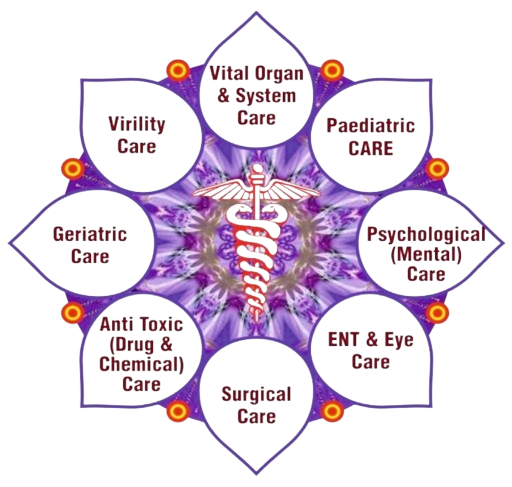In Ayurveda, cervical spondylitis is referred to as “Greeva Shoola,” where “Greeva” denotes the neck, and “Shoola” signifies pain. Similarly, lumbar spondylitis is termed “Kati Shoola,” with “Kati” representing the lower back.
Dosha Imbalance
Ayurveda attributes cervical and lumbar spondylitis to an imbalance of the Vata dosha, one of the three fundamental energies governing the body. When Vata dosha becomes aggravated or imbalanced, it leads to stiffness, pain, and inflammation in the neck and lower back regions, resulting in spondylitis.
Symptoms
- Cervical spondylitis (Greeva Shoola) includes neck pain, stiffness, restricted range of motion, headaches, and radiating pain or numbness in the arms.
- Lumbar spondylitis (Kati Shoola) manifests as lower back pain, stiffness, difficulty in bending or twisting, leg pain (sciatica), and tingling or weakness in the legs.
Causes
Various factors contribute to the development of cervical and lumbar spondylitis in Ayurveda, including Vata dosha imbalance, poor posture, trauma, ageing, genetic predisposition, obesity, and degenerative changes in the spine.
Diagnosis
In Ayurveda, diagnosing cervical and lumbar spondylitis entails a thorough evaluation of symptoms, including pulse examination (Nadi Pariksha) and tongue examination (Jivha Pariksha). Additionally, it involves assessing overall dosha imbalance, considering past medical history, lifestyle factors, and conducting imaging studies such as X-rays or MRI scans.
Treatment Approaches
Ayurvedic treatment for cervical and lumbar spondylitis focuses on balancing the doshas, reducing inflammation, strengthening the spine, and alleviating symptoms.
Treatment modalities may include herbal remedies, Panchakarma therapies, dietary modifications, lifestyle adjustments, and external therapies (like herbal poultices and warm oil massages).
Prevention
In Ayurveda, preventing cervical and lumbar spondylitis involves maintaining a balanced lifestyle, following proper ergonomics, staying physically active, managing stress, and addressing risk factors like obesity and poor posture.
Follow-Up:
Regular follow-up consultations allow monitoring of progress, adjustment of treatment as needed, and ongoing support for managing cervical and lumbar spondylitis effectively.
Ayurveda offers a holistic approach to understanding and managing cervical and lumbar spondylitis. By addressing imbalances in the body’s energies, implementing lifestyle modifications, and utilizing various therapeutic modalities, Ayurveda aims to alleviate symptoms, improve spinal health, and enhance overall well-being



